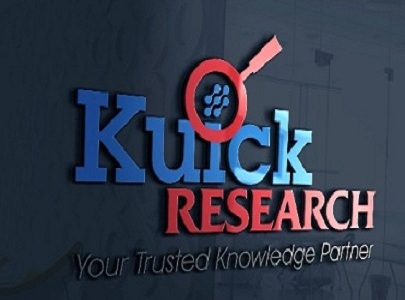
Tyrosine kinase is a sub class of Protein Kinases family of enzyme responsible for phosphorylation.It has been found that mutation or other anomaly in these enzymes causes uncontrolled cell division leading to cancer. Because of their direct involvement in cell division they are used in cancer treatment by using kinase inhibitors to prevent unregulated cellular proliferation. Epidermal Growth Factor Receptor Family (EFGR) are present on the cell surface and anomalies like mutations leads to the cancer formation and its members have been found to have activity like receptor tyrosine kinases. EFGR Members of these families have been found to be overexpressed in various malignancies like breast cancer, glioblastoma and lung cancer. They are utilized for formulating targeted therapeutics for cancer treatment. Her1/ Her2 are commonly found to be overexpressed in case of breast cancer and many cancer therapeutics have been developed to treat metastatic condition.
Tyrosine kinase therapeutics segment is rapidly growing along with numerous products at various phases of industry life cycle. Huge investments in research and development segment could be attributed as main reason behind growth of this market segment. As a result, several products are at different stages of clinical trials which will be introduced in market in coming years. Some tyrosine kinase medical care products including mAbs are costly to produce but large patient base and superior pharmacological benefits are some factors responsible for continuous growth of this market segment. Development and discovery of innovative technologies for commercialization is increasing because of large financial inputs. As a result, more therapeutic options will be available to patients at cost effective rates. Their disease coverage is increasing continuously due to which their market penetration is expected to increase several folds in coming years.
Increasing disease incidences especially cancer has attracted several pharmaceutical companies to invest in this segment. Imatinib (protein-tyrosine kinase inhibitor) for CML treatment by Novartis was the first of this kind to enter in global market. Targeted therapeutics offer superior pharmacological benefits due to which profit margin of tyrosine kinase inhibitors are expected to increase in coming years. Small molecule based targeted therapeutics will offer competition to monoclonal antibodies in terms of pharmacological efficacy but pricing and commercialization strategies are also expected to play a major role.
Monoclonal antibodies are widely accepted across the globe due to higher safety and efficacy profiles along with minimized side effects. Several mAbs biding to different tyrosine receptors have been formulated by pharmaceutical companies generating significant revenues across the globe. For instance, Genentech’s trastuzumab binds to HER2 for breast cancer treatment while Bevacizumab binds to VEGF to treat NSCLC. Pharmaceutical companies are developing cancer drugs to target same receptor kinase due to which severe competition would be found in certain categories. EFGR is widely studied due to which majority of tyrosine kinase therapeutics belong to this category. Moreover, it is involved in breast cancer which has well developed market so revenues generated by this segment are expected to be significantly higher than other cancer categories.
Clinical pipeline of tyrosine kinase therapeutics is quite strong due to which competitive product are expected to enter continuously in global market. Owing to increasing disease incidences, it has become imperative to take necessary steps to introduce innovative tyrosine kinase therapeutics in global market. Technological advancements may allow the investigators to develop products having high safety and efficacy levels along with minimized side effects but it will take some time. Various products are at different stages of clinical trials which will be introduced in global market in coming years. Higher cost effectiveness is expected due to which sales is expected to increase and profit margins will increase. With all these development, the future of tyrosine kinase therapeutics looks optimistic.
\" Tyrosine Kinase Inhibitors Market & Pipeline Insight 2015\" Report Highlight: